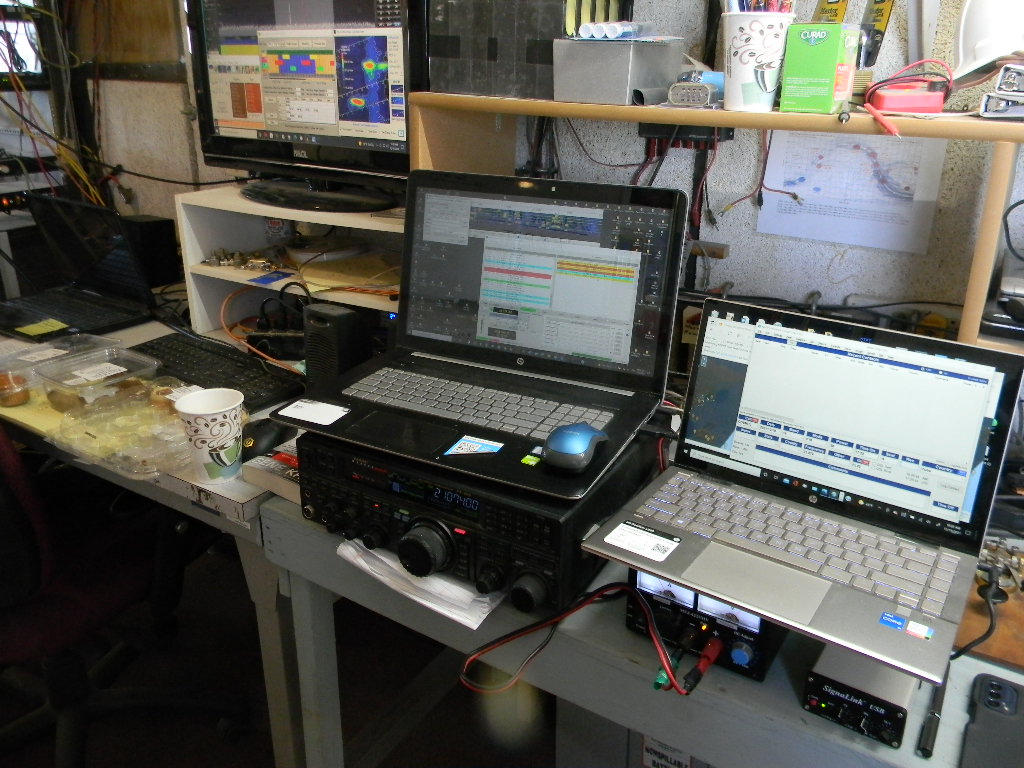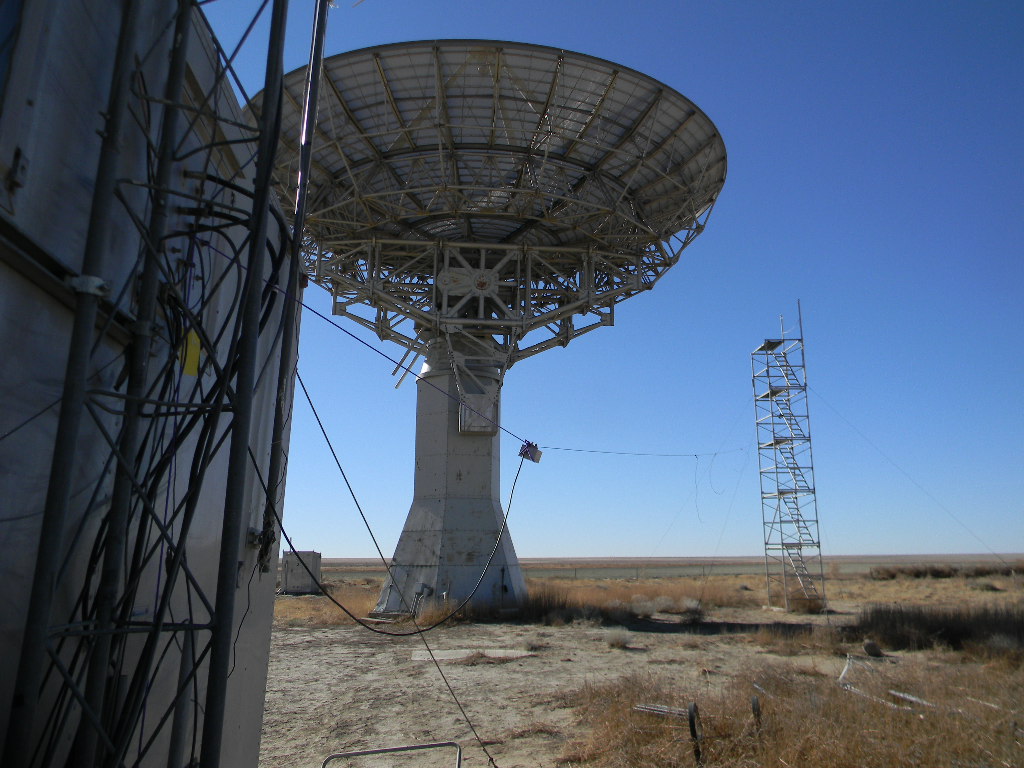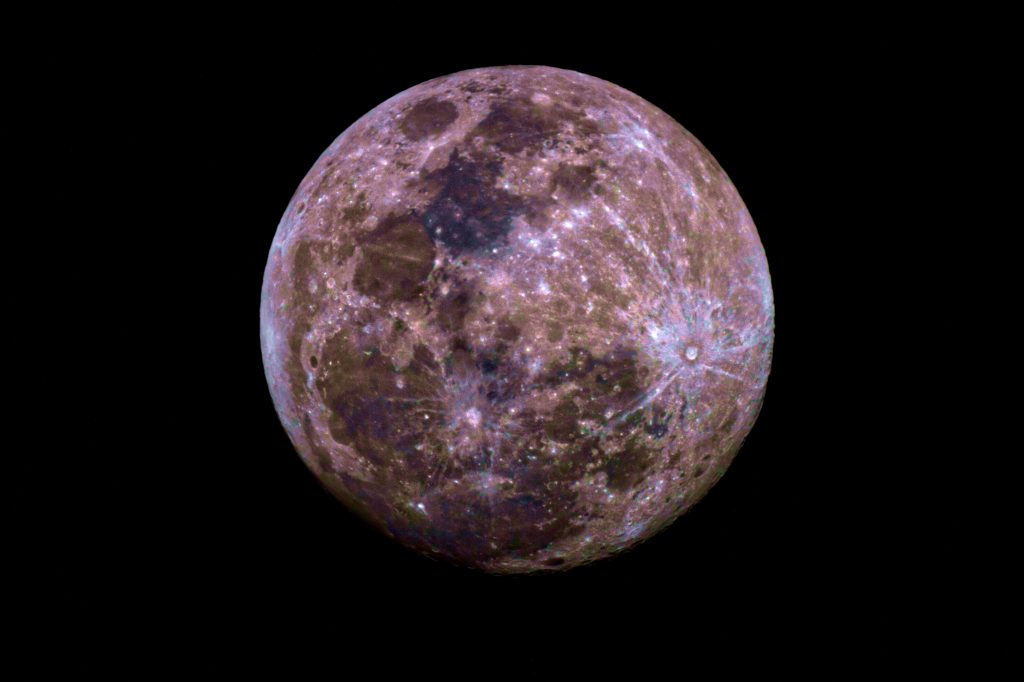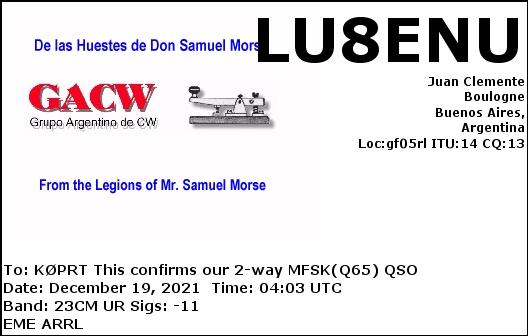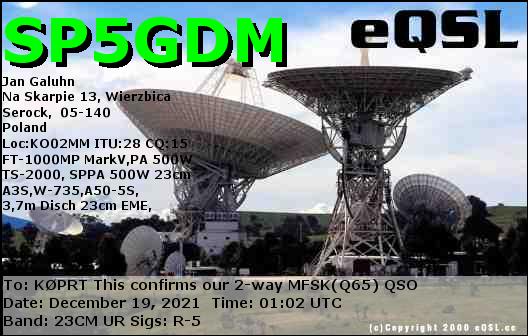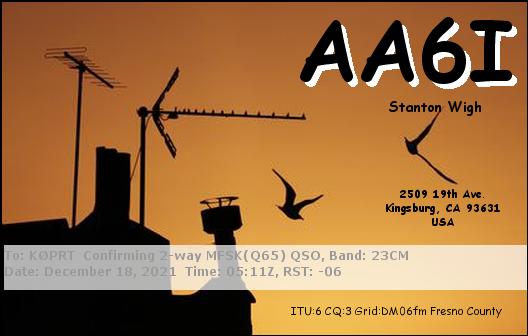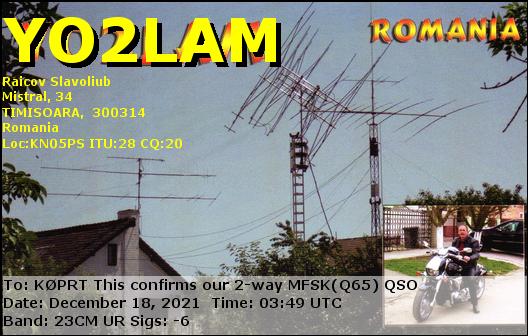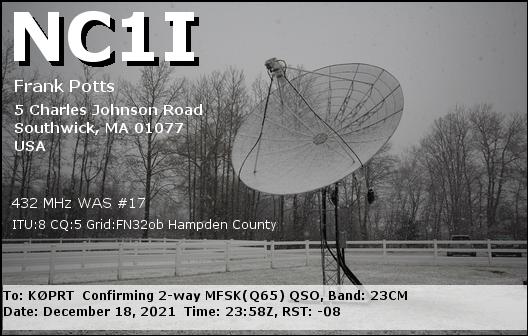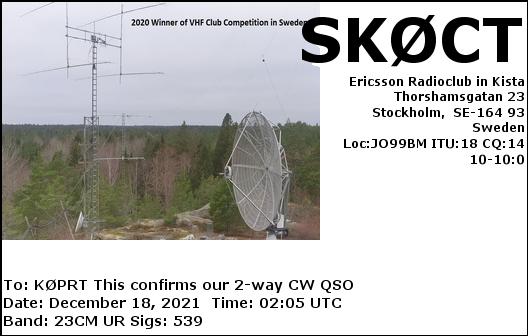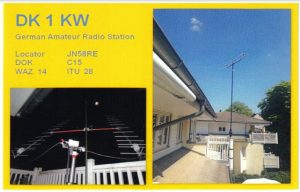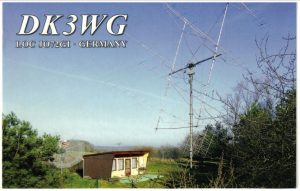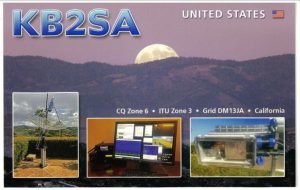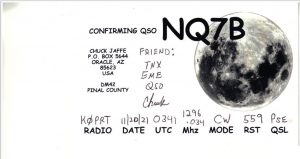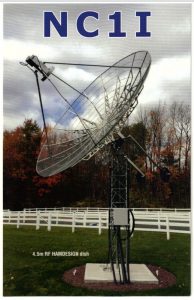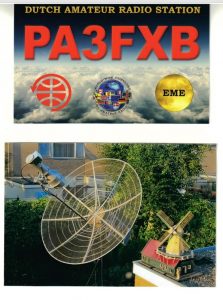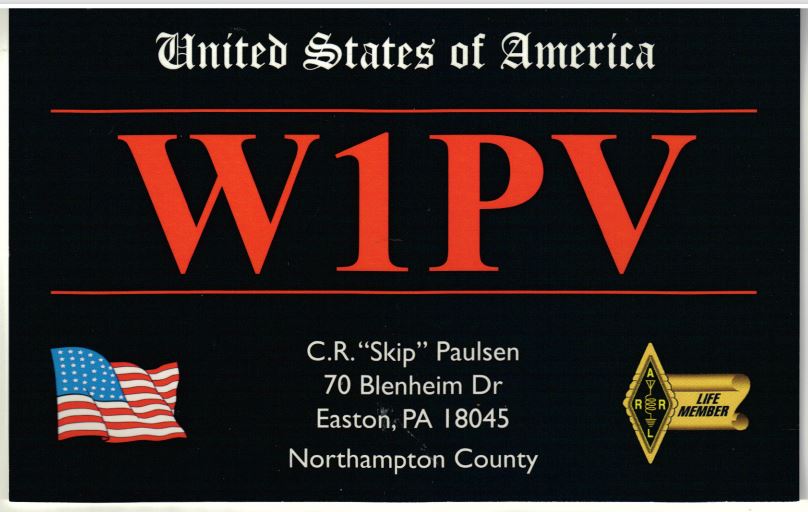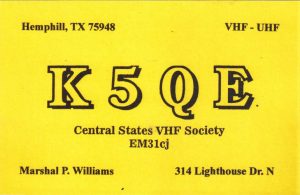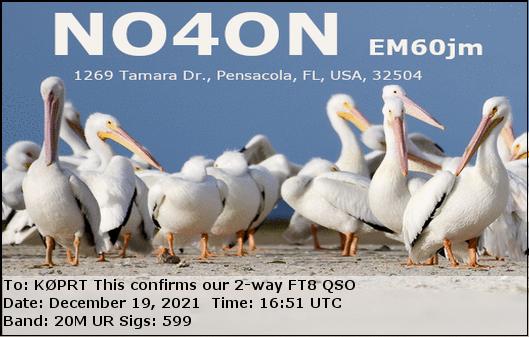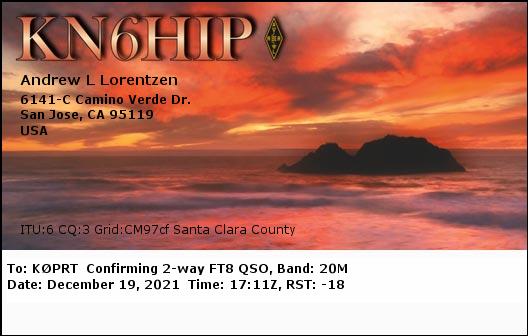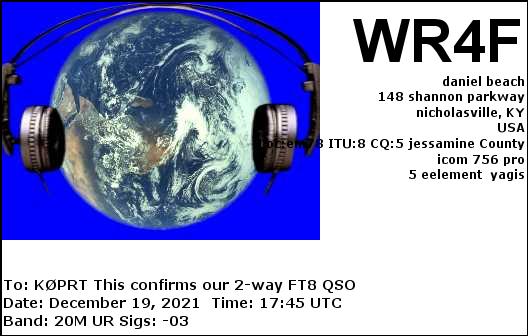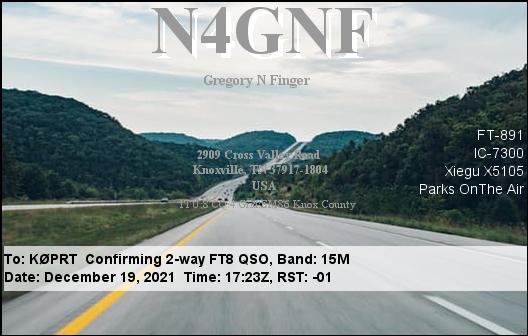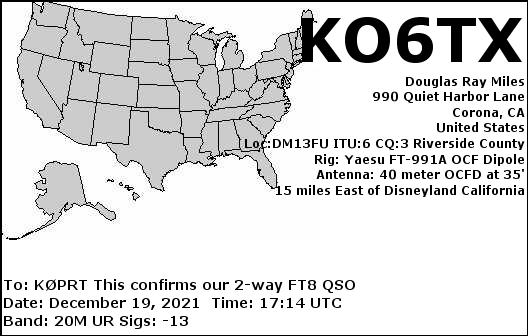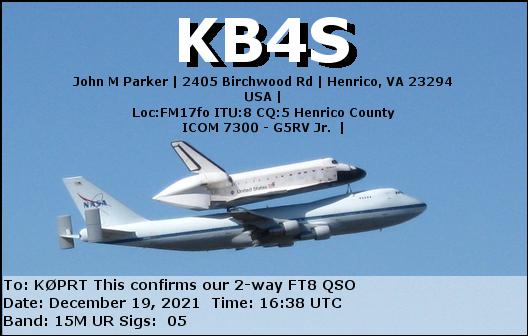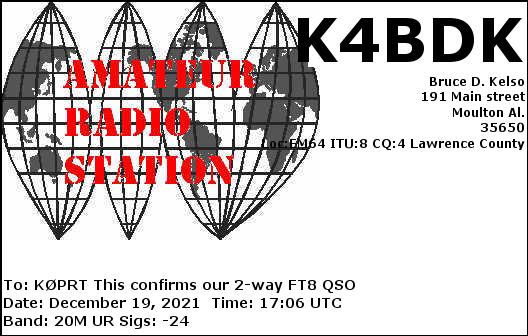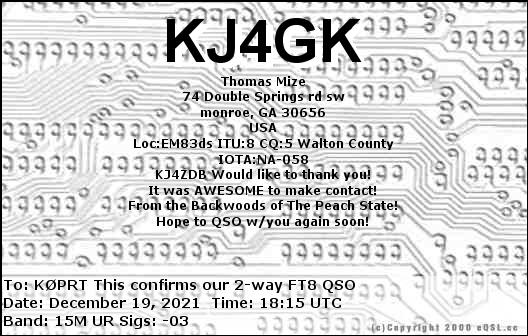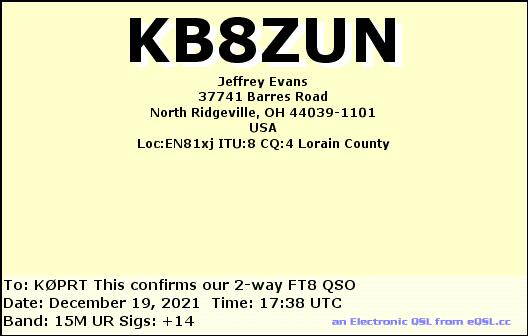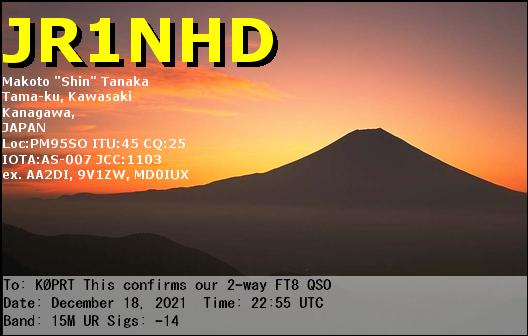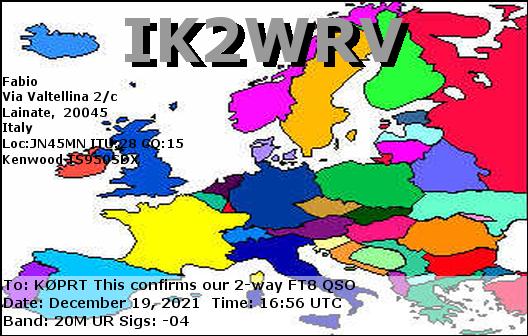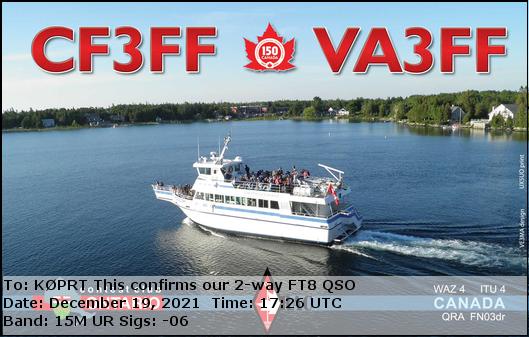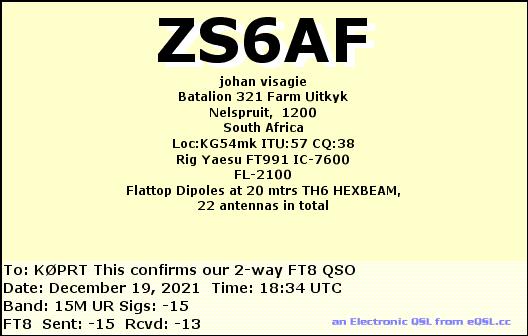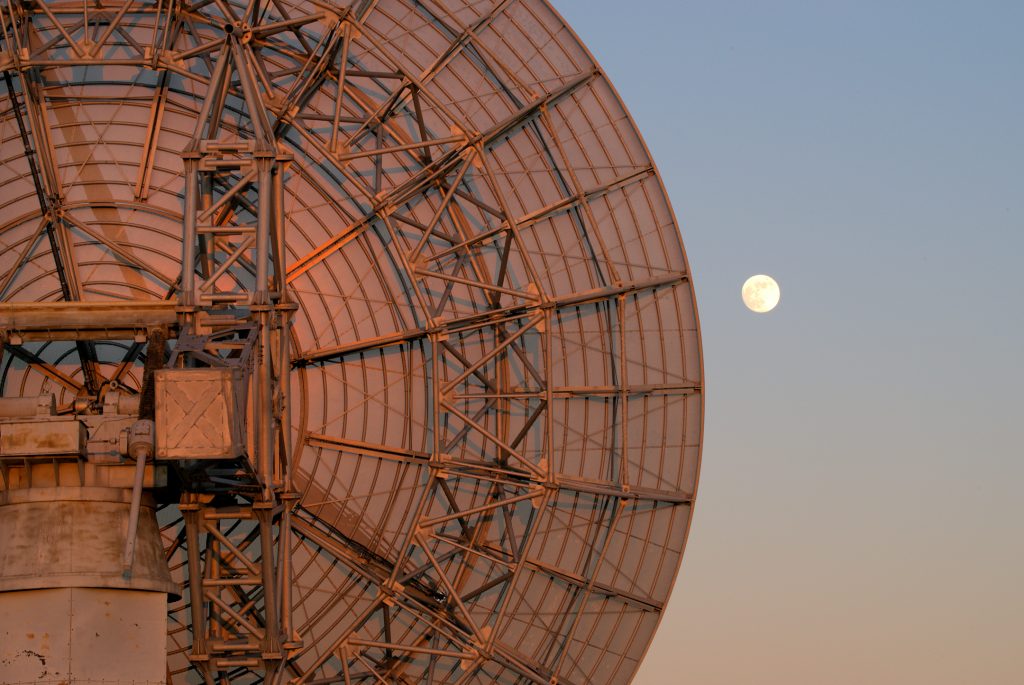
Post by Gary Agranat, with Ray Uberecken and Floyd Glick.
Photos by Glenn Davis, Marc Stover, Bill Miller, Floyd Glick, and Gary Agranat.
Last December DSES successfully completed operating Moon bounce communications for a second year, for the annual ARRL EME (Earth-Moon-Earth communications) Contest EME Contest (arrl.org). The contest had two rounds last autumn. We reported earlier on operating for the first round on the weekend of November 20 & 21, 2021. This article is about successful completion of the second round, on the weekend of December 19 & 20, 2021.
This was our most successful EME season to date, not just in the number of contacts we made, but in the participation of our members, in successfully using a digital mode for many contacts for the first time, and with our equipment working well with no trouble. And we are learning from our experiences.
For our December weekend we had Gary Agranat WA2JQZ and Ray Uberecken AA0L operate through the whole weekend. We also had Jim Burnett WB0GMR, Flyod Glick WD0CUJ, Bill Miller KC0FHN, Glenn Davis, and Marc Stover. Jim got his first experience operating EME, making some of the digital Q65 contacts Friday night. Floyd, Bill, and Glenn stayed Friday night. Marc was there both nights to make time lapse movies of the antenna tracking the Moon. Glenn ensured our tracking system was working well. Everyone had a chance to call CQ on SSB and to hear their voices reflect back from the Moon 2 seconds later.
Moon bounce is communicating by sending signals to the Moon, and reflecting those signals back to Earth to anyone else who has visibility of the Moon and the necessary equipment. With the Moon’s distance a quarter of a million miles away, traveling at the speed of light, the signals take about 2 seconds to make the round trip journey. And the signals are significantly weakened by traveling that long a distance. With the Moon traveling at a different velocity from one’s location on the surface of the Earth, there also is a Doppler shift to compensate for. Moon bounce communications therefore can be quite a technical challenge. Reliably copying the weak signals can also be a challenge. With our large 60-foot dish antenna, our group is fortunate to have an excellent capability to meet all these challenges.
Because Moonrise was at about the time of sunset (as it was on the November weekend), our EME operation was essentially all over night, with a short period available also after sunrise.
We operated on the 23 cm band (1296 Mhz). We operated Morse Code CW, SSB voice, and Q65 digital mode. More about our technical setup later.
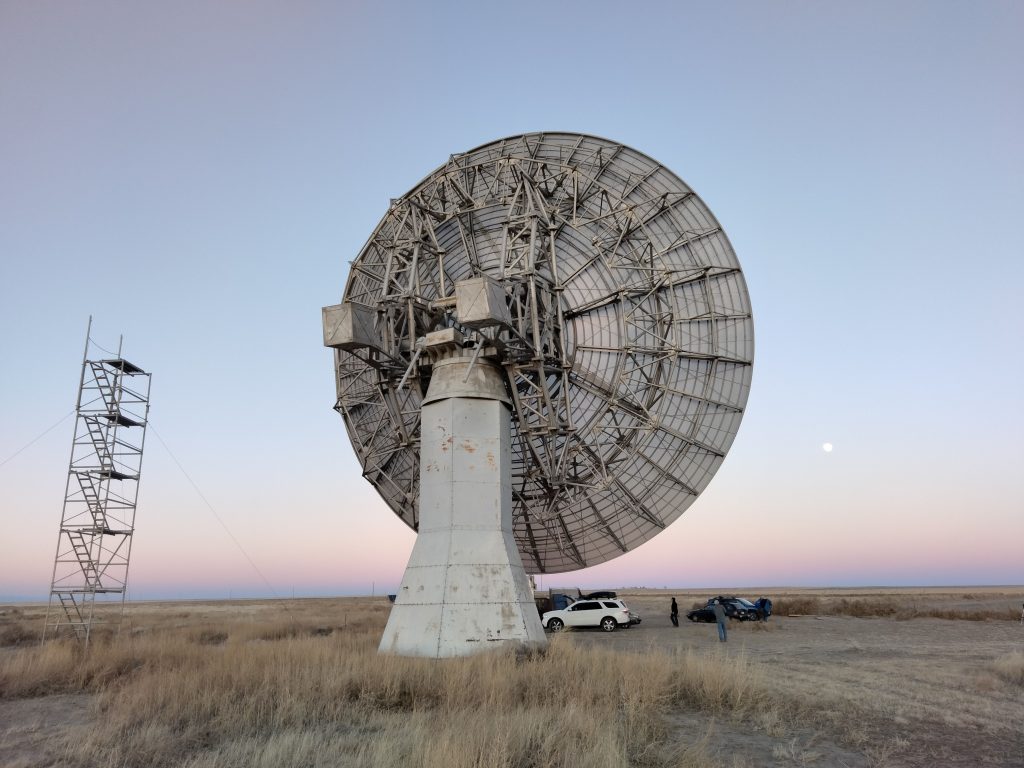
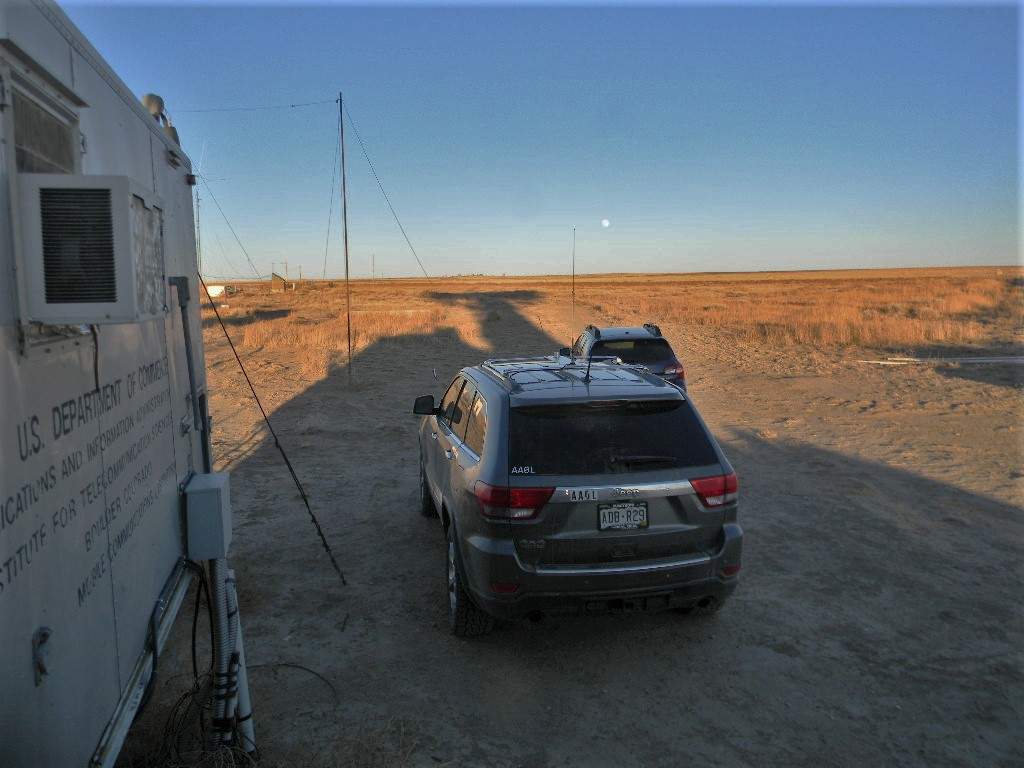
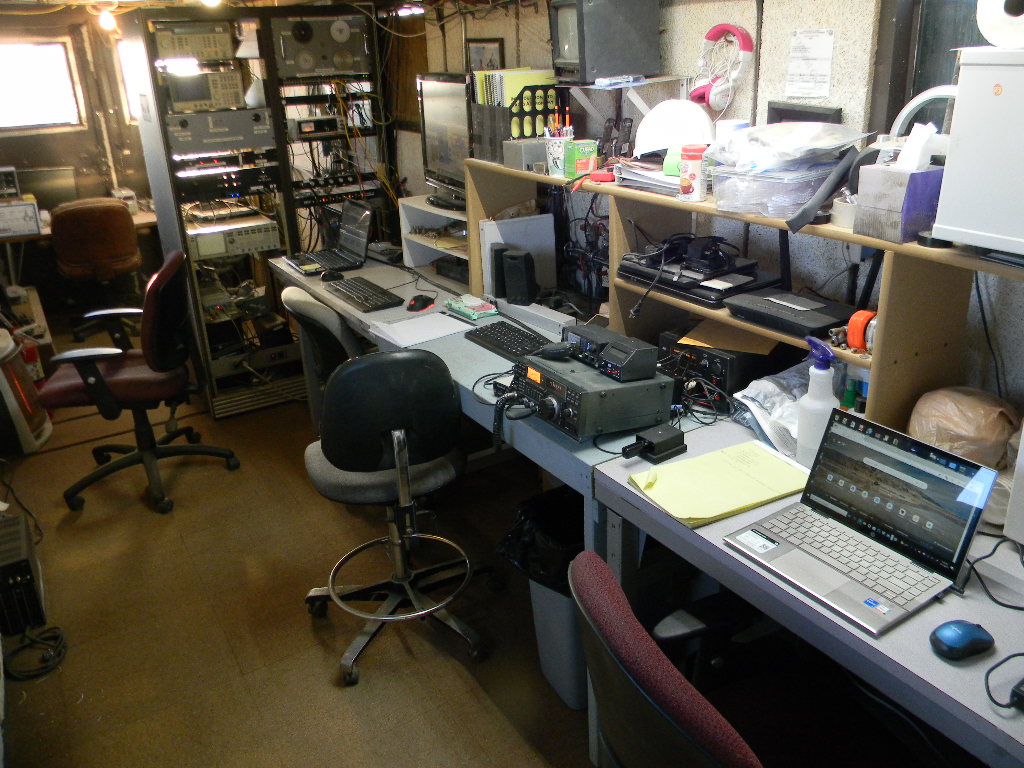
On our December weekend we made 47 EME contacts. Added to our November weekend operation, that brought the total number of contacts to 92. This compares with the 50 contacts we made for the contest last year.
Of the 92 contacts, 54 were CW (Morse Code), 2 were SSB phone, and 36 were in the new Q65 digital mode. 53 contacts were to Europe, 33 to North America, 3 to South America, 1 to Australia, 1 to the Philippines, and 1 to Asia (Japan). We contacted 22 unique DXCC entities, 16 states, and 3 Canadian provinces.
For the November weekend, Dan Layne AD0CY got our Q65 digital mode working and made 2 contacts then. On the December weekend, Jim WB0GMR operated Friday night and made 8 Q65 contacts. Gary WA2JQZ stayed for the operations on both weekends and made the other contacts (CW, SSB, and Q65) with the help of Ray AA0L.
For this year’s contest we experienced no significant technical problems. That enabled us to start operating as soon as the contest time started and as soon as we had a signal path to the Moon. The operations for both weekends went smoothly and with a relaxed tone.
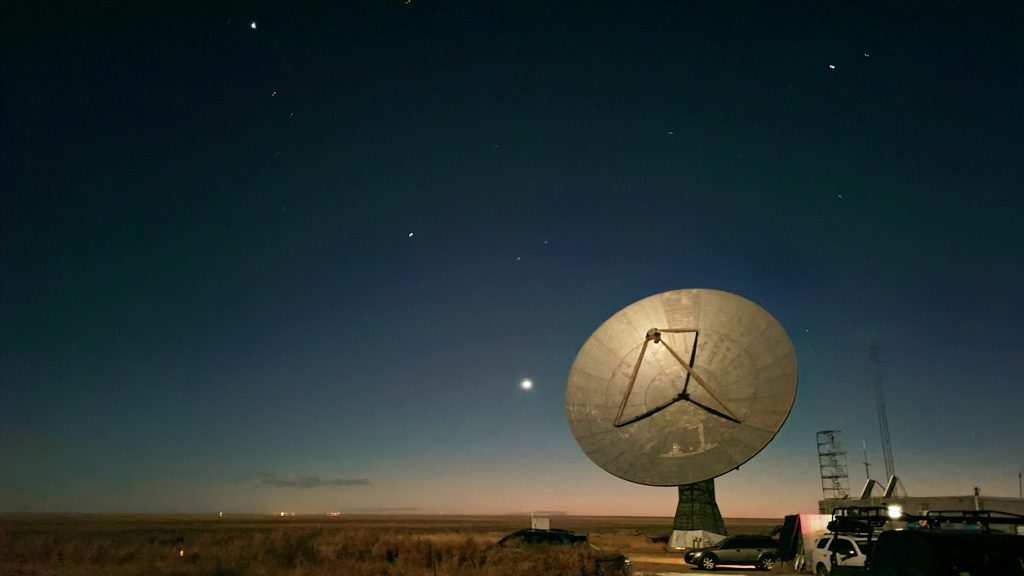
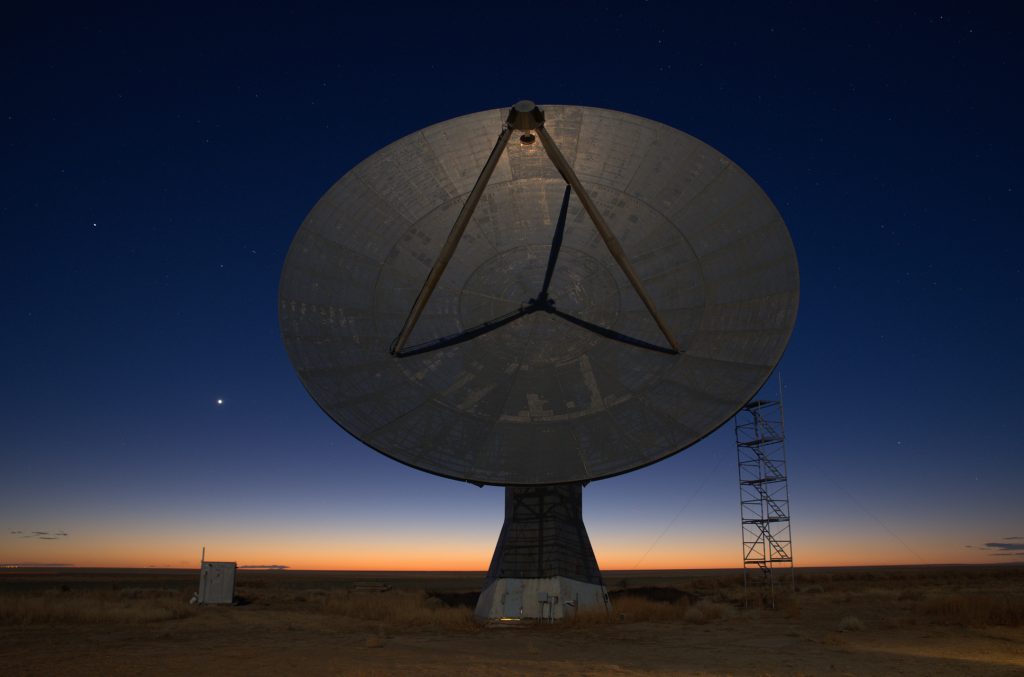
Ray AA0L contributed this technical description: The moonbounce equipment this year consists of an ICOM IC-1271A with a built-in low noise preamp (about 1 dB), a VHF Design 150 Watt amplifier at the feed, a Tokyo High Power intermediate power amp with built in Gasfet preamp, VHF Design .3 dB nf, 30 dB gain preamp at the feed and a KL6M feed with a choke. All this provides a noise figure of 0.4 dB with an overall gain at the feed of >40 dB. We have more than sufficient gain in both directions to overcome the 200 or so feet of feedline from the trailer to the dish feed.
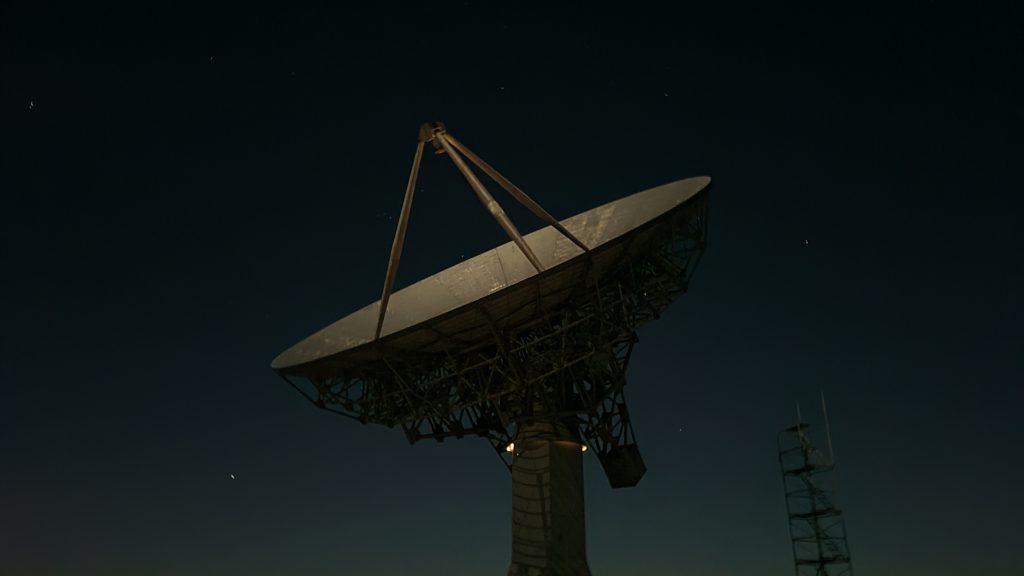
On Friday night we tried to get in as much Morse Code CW contacts as we could. We switched to digital Q65 when we had contacted most of the CW contacts we could hear at a given time. Through the night we alternated back and forth. We also occasionally attempted SSB voice.

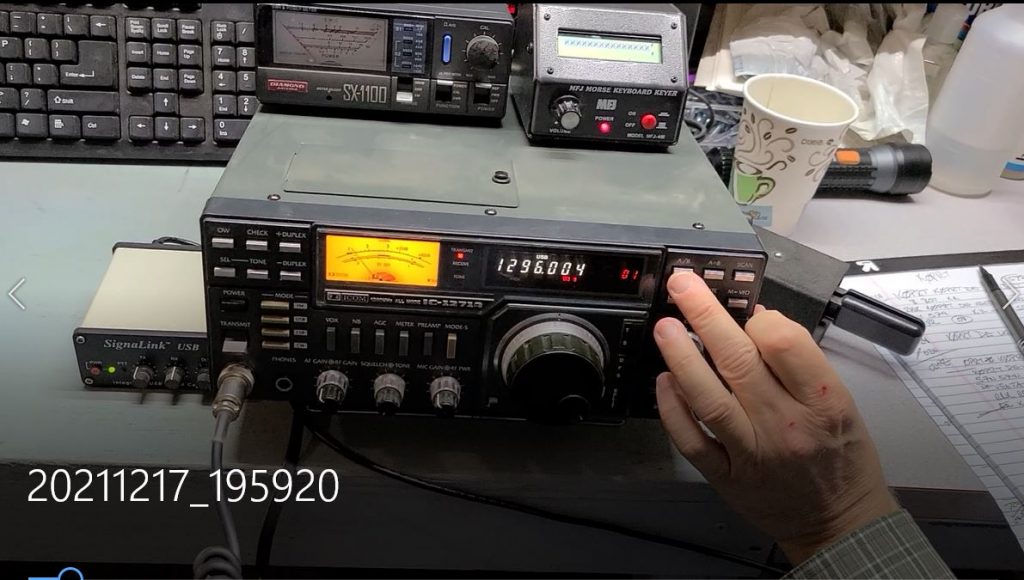
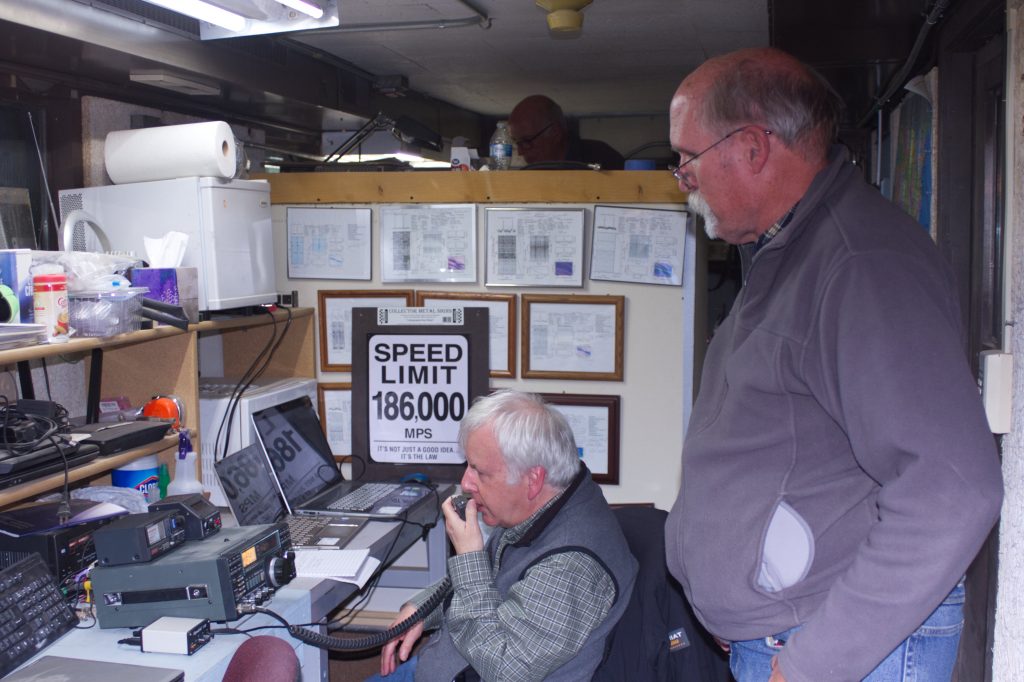

On Saturday morning we determined when the Moon would rise in Japan and in Australia. We stayed awake for that, and when those times came, we searched for those stations. That’s how we immediately found our Japan and Australian contacts, as soon as they had a signal path. We got them in time before the pileups that followed. When we couldn’t hear any additional stations, we went to sleep.
We had an unexpected power failure late Saturday morning, after the Moon had set and we were taking a break. The cause was eventually traced to a pigeon that had short circuited the transformer where the electric power comes into the site. We called the local utility, and after a couple of hours they reset the circuit breaker on the main county road. This was unfortunate for the pigeon. But fortunately for us this didn’t happen during our EME operation, and didn’t disrupt us.
As we anticipated, most of the stations we heard on CW on Sunday night were ones we had already worked. Therefore on Sunday night we concentrated most of our efforts on digital Q65. We made most of our digital contacts then.
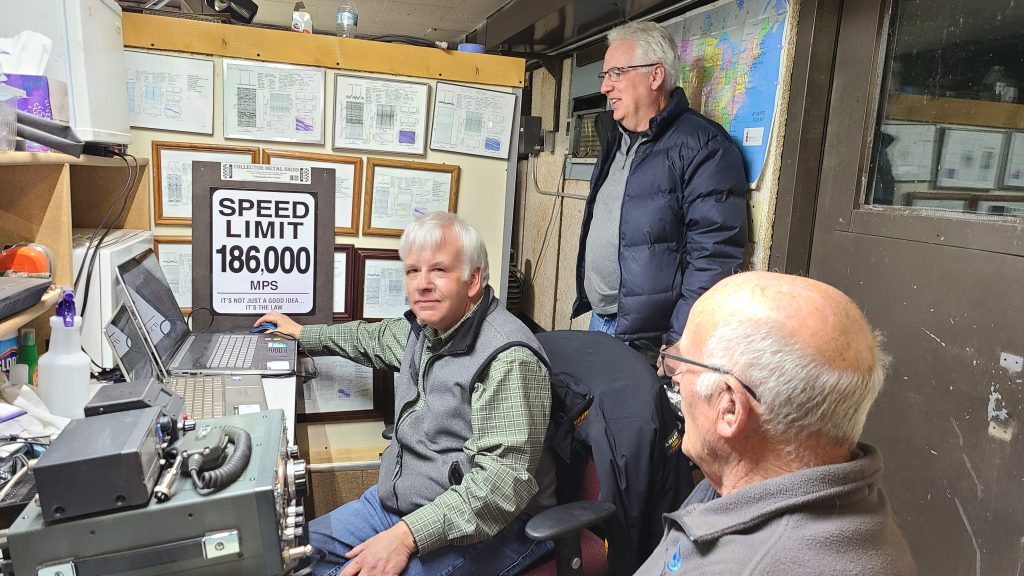
On Sunday morning after the Moon had set, as we woke up and wound down and had coffee, Gary made some HF FT-8 digital contacts on the 15 and 20 meter bands. A portable multi-band end fed antenna was extended from the trailer to the service tower. And the contacts were made on a Yaesu FT-950. The bands were open to as far as Europe and Japan. This gave us a chance to get on the air on the more traditional ham bands, and to be part of the rest of the ham radio community. Over 50 FT-8 contacts were made.
The Yaesu FT-950 operating HF FT-8 and the End fed antenna extended to the service tower. (Photos by Gary Agranat)
This was our most successful EME operation to date. We made more contacts, our equipment worked well as expected, we had increased participation, we developed our experience further, and we all enjoyed the experience. Certainly hearing one’s voice or signal come back from the Moon 2 seconds later is an experience one doesn’t forget. This should give us a basis for doing more EME operations, better, and more times than just for the contest.
This year several members also devoted their efforts to photographing. Marc Stover’s time lapse movie work and Floyd Glick’s lunar photography follow.
Mark Stover devoted all of Friday and Saturday nights to record time lapse movies of our dish antenna tracking the Moon, from Moonrise to Moonset. He used several cameras, capturing several perspectives, and several aspects of the antenna’s and sky’s motions. These are still images from photographing. These are followed by a one-minute movie he edited together. The temperature both nights dropped to the teens F. Marc wore an exposure suit to keep warm.

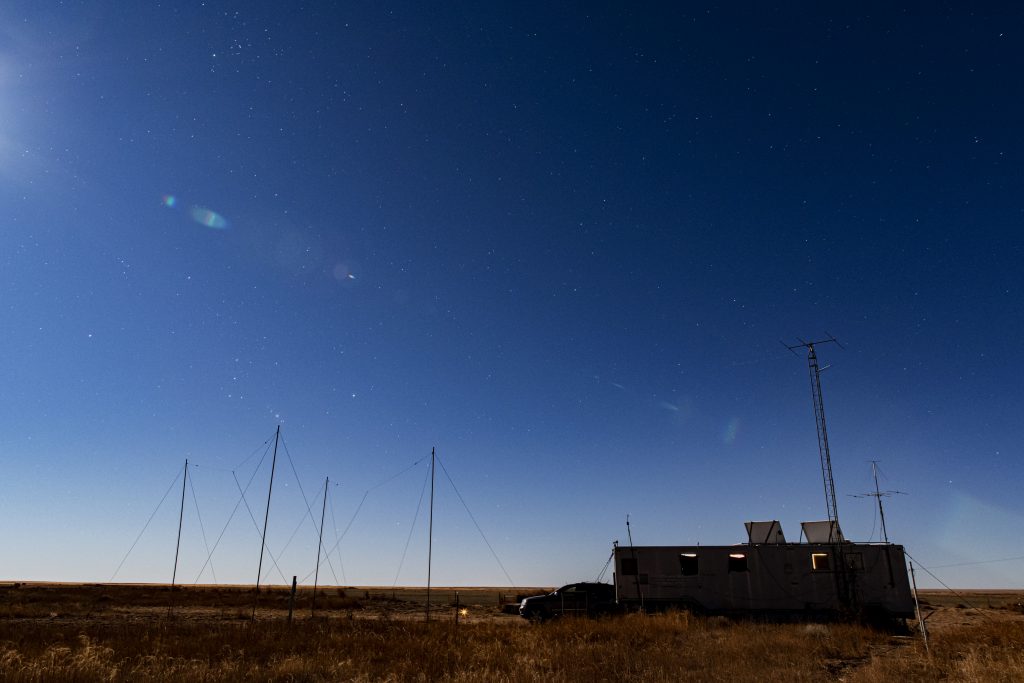
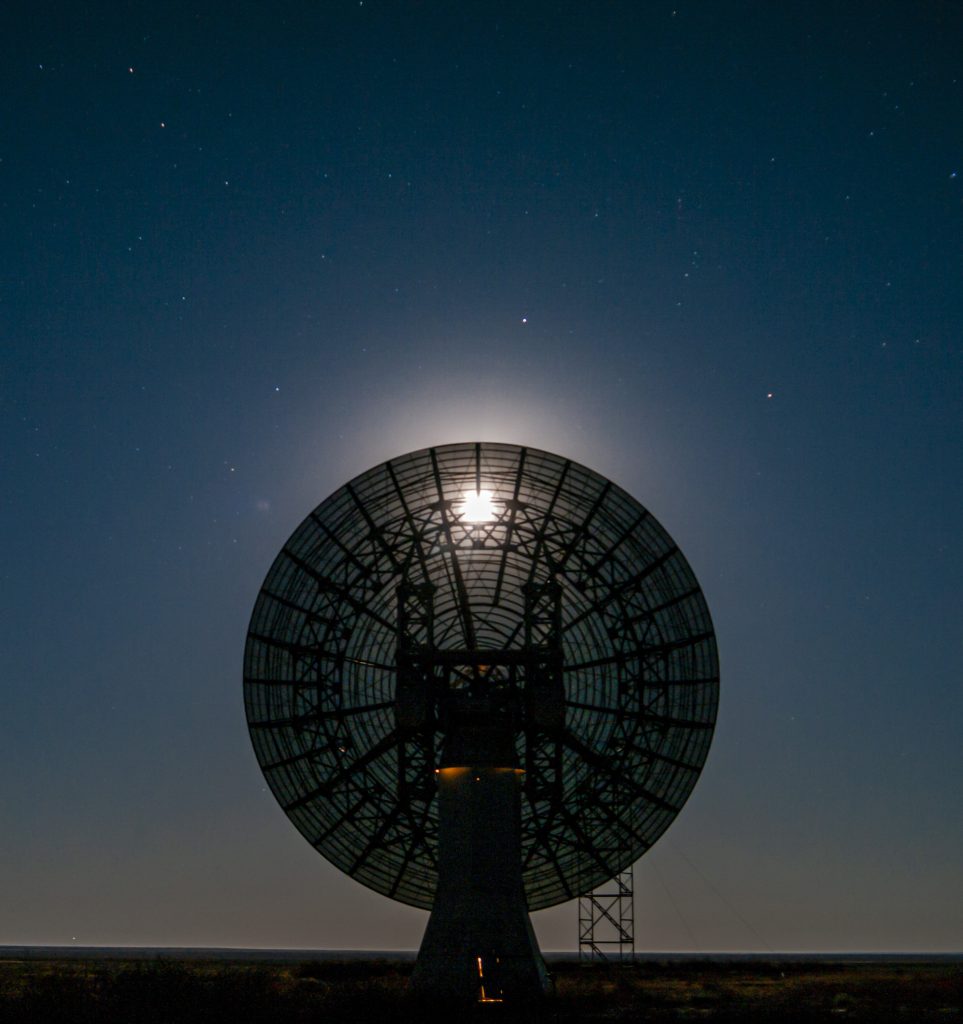

Floyd Glick (WD0CUJ) took these astronomical color images of the Moon on Friday night. He took these unfiltered images through his 5 inch Maksutov telescope (unguided). Floyd wrote: “The Moon actually has color, but because it is so bright our eyes perceive it as black and white. I have enhanced the colors (solar temperature = 5900K) in the last picture to illustrate them better.”
QSL confirmation cards we received for our EME contacts, by eQSL and post office mail. Countries represented are Argentina, Chile, Germany, The Netherlands, Poland, Romania, Sweden, and the United States:
Some of the variety of QSL cards we received for our high frequency (HF) FT-8 digital contacts from Sunday morning, on the 15 and 20 meter bands. We reached North and South America, Europe, Asia, and Africa:
